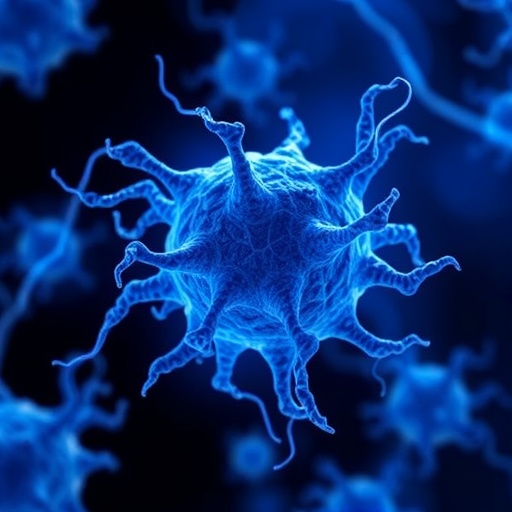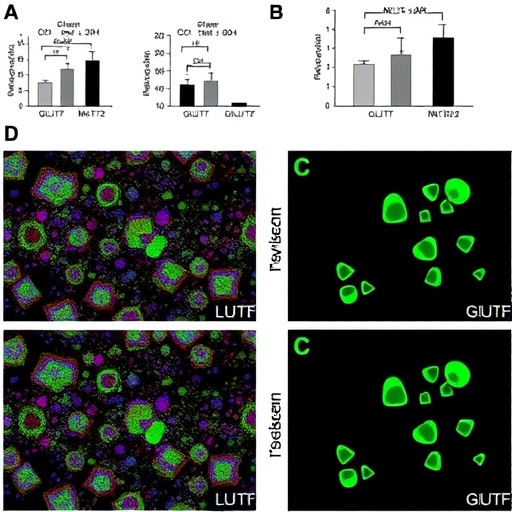In a groundbreaking study recently published in BMC Cancer, researchers have unveiled critical insights into NETO2, a gene whose expression levels bear significant prognostic implications in oral squamous cell carcinoma (OSCC). This comprehensive analysis sheds light on the complex role NETO2 plays not only in tumor development but also in orchestrating the immune microenvironment—a pivotal factor governing cancer progression and therapeutic response.
Oral squamous cell carcinoma remains a formidable health challenge worldwide, notorious for its aggressive nature and limited treatment success in advanced stages. Despite advancements in molecular oncology, identifying robust prognostic biomarkers that can guide clinical decision-making has been elusive. The study, spearheaded by Wang et al., leverages multi-omics data and pioneering methodologies to dissect the nuances of NETO2 expression within OSCC contexts.
Utilizing extensive public databases, the investigation revealed a marked overexpression of NETO2 in OSCC tissues compared to normal counterparts. This aberrant expression was tightly correlated with diminished overall survival (OS) and progression-free survival (PFS), underscoring NETO2’s potential as a prognostic beacon. Through Kaplan–Meier survival analyses, high NETO2 levels consistently predicted adverse patient outcomes, suggesting that its upregulation could be driving malignancy progression.
To translate these findings into clinically actionable tools, the research team constructed a nomogram incorporating NETO2 expression alongside traditional clinical variables. This predictive model demonstrated robust performance in both TCGA and GEO cohorts, achieving area under the curve (AUC) metrics exceeding 0.66 for 1-, 3-, and 5-year survival predictions. Such accuracy underscores the model’s utility in stratifying patients based on risk, potentially guiding personalized therapeutic interventions.
Venturing beyond bulk tissue analysis, the study applied cutting-edge single-cell RNA sequencing (scRNA-seq) to unravel NETO2’s cellular specificity within the tumor landscape. Intriguingly, NETO2 expression was enriched predominantly in T cell subsets, implicating it in modulating adaptive immune responses within the tumor milieu. This spatial and cellular resolution provided novel insights into how NETO2 interfaces with immune components to influence tumor biology.
Further pathway enrichment analysis identified significant associations between NETO2 and critical immune signaling cascades, including cytokine-cytokine receptor interactions and T cell receptor signaling pathways. These interactions highlight a putative mechanism through which NETO2 may sculpt the immune microenvironment, potentially tipping the balance between immune surveillance and tumor immune evasion.
Delving into the immunological consequences of NETO2 dysregulation, the researchers observed elevated immune cell infiltration within tumors exhibiting high NETO2 expression. This paradoxical increase in immune cells—concurrent with poorer prognosis—raises compelling questions about immune dysfunction or exhaustion states facilitated by NETO2-driven signaling networks. Such findings could redefine current paradigms about immune infiltration as invariably favorable in cancer contexts.
The study also explored the translational potential of NETO2 as a therapeutic target by examining its relationship with tumor mutation burden (TMB), drug sensitivity, and immunotherapy responsiveness. Patients with elevated NETO2 expression showed signs of heightened sensitivity to diverse anticancer agents, suggesting that NETO2 status could serve as a biomarker to tailor chemotherapy regimens. Additionally, computational molecular docking evaluations revealed strong binding affinities between NETO2 and several small-molecule inhibitors, including ruxolitinib, paclitaxel, and docetaxel, providing a rationale for targeted therapeutic development.
Reinforcing bioinformatic predictions, experimental assays validated NETO2’s functional role in promoting hallmark cancer behaviors: cellular invasion, migration, and proliferation. These capabilities cumulatively potentiate tumor aggressiveness and metastatic potential, making NETO2 an enticing candidate for future intervention strategies designed to curb OSCC progression.
Importantly, this comprehensive research bridges a critical knowledge gap by linking NETO2 expression profiles to tangible changes in the tumor immune milieu. The gene’s modulation of immune pathways advocates for integrative therapeutic approaches that concurrently target tumor-intrinsic factors and the immune microenvironment. This strategy aligns closely with the emerging paradigm of combination immunotherapies that seek to overcome resistance and improve survival outcomes.
The study’s findings carry profound implications for the future of OSCC management. By establishing NETO2 as a multifaceted biomarker encompassing prognostic significance and immunomodulatory function, clinicians and researchers alike are equipped with a powerful molecular tool to advance precision oncology. Moving forward, the potential for NETO2-targeted therapies, possibly in concert with immune checkpoint inhibitors, opens promising avenues to transform the clinical landscape of oral cancer treatment.
Moreover, the integration of scRNA-seq data sets a precedent for future investigations into the cellular dynamics of tumor immunology, particularly emphasizing the need to dissect gene expression patterns at single-cell resolution. This granular perspective facilitates the identification of novel cellular targets and pathways amenable to therapeutic manipulation.
While challenges remain in translating these discoveries into clinical practice—such as drug development timelines and validation in expansive patient cohorts—the study by Wang et al. undeniably marks a pivotal step toward molecularly informed and immunologically nuanced cancer care. The confluence of comprehensive bioinformatics, molecular docking, and experimental validation strengthens the translational potential of NETO2-centric strategies.
In summation, NETO2 emerges as a vital player in the malignancy and immune modulation of oral squamous cell carcinoma. This multifaceted gene not only forecasts patient outcomes but also actively sculpts the tumor immune architecture, thereby impacting therapeutic responses. The prospect of harnessing NETO2 as both a biomarker and a therapeutic target heralds a new frontier in oncological precision medicine, potentially revolutionizing care paradigms for OSCC patients globally.
Subject of Research: Investigation of NETO2 gene expression, its prognostic significance, and regulatory effects on the immune microenvironment in oral squamous cell carcinoma
Article Title: Research on the expression, prognostic value, and regulatory effects on immune microenvironment of NETO2 in oral squamous cell carcinoma
Article References: Wang, J., Cui, Z., Yang, K. et al. Research on the expression, prognostic value, and regulatory effects on immune microenvironment of NETO2 in oral squamous cell carcinoma. BMC Cancer 25, 1714 (2025). https://doi.org/10.1186/s12885-025-15164-y
Image Credits: Scienmag.com
DOI: 10.1186/s12885-025-15164-y
Tags: aggressive nature of oral cancercancer research methodologiesclinical decision-making in oral cancerimmune microenvironment in cancermulti-omics analysis in oncologyNETO2 gene role in oral cancernomogram for cancer prognosisoral squamous cell carcinoma prognosisoverall survival and NETO2 levelsprognostic biomarkers in OSCCprogression-free survival in cancer patientstumor development and immunity





